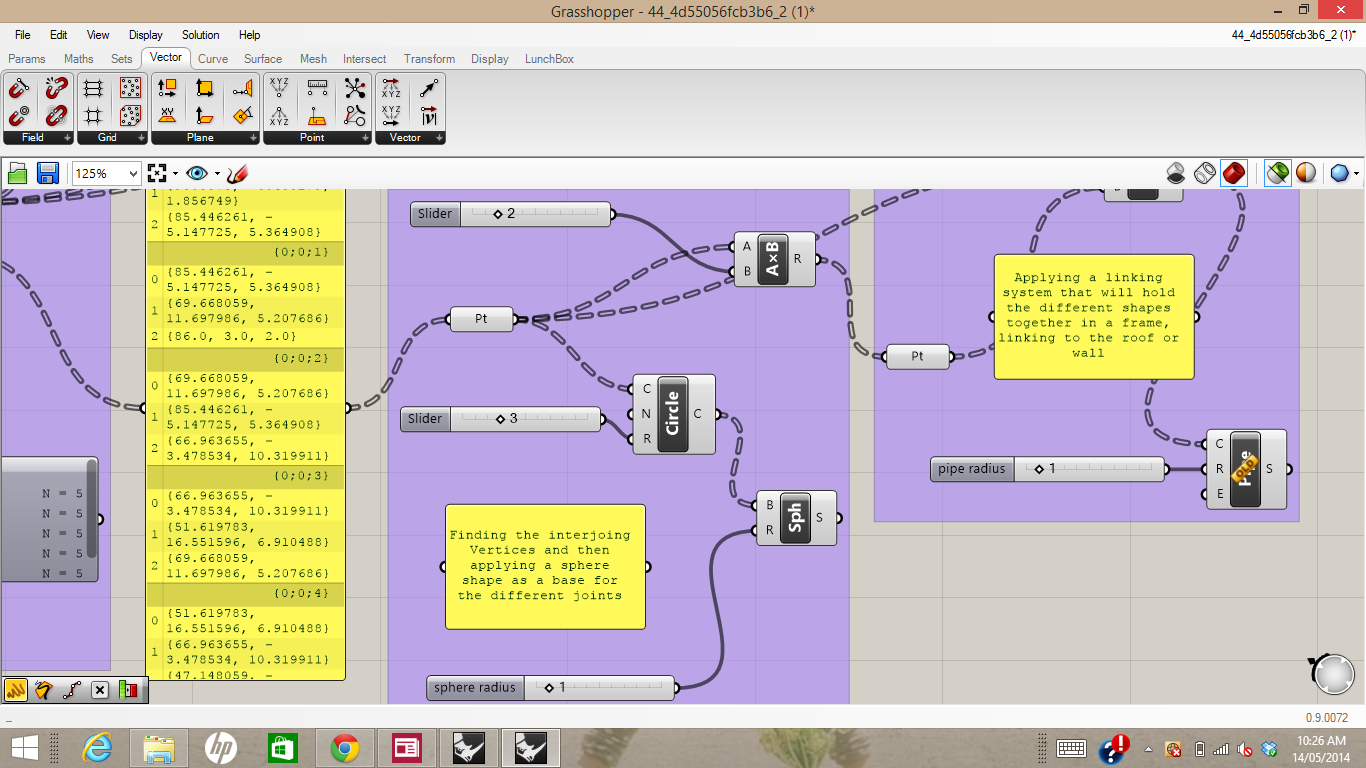For this experiment, I wanted to integrate the two different methods (3d printing and laser cutting).
My original concept was to build a canopy out of laser cut materials which would be held together by 3d printed objects
My original concept was to use a series of joints that would be unique for every individual surface. These joints would have a series of arms that would attach themselves from the surfaces of the canopy. These arms would change angle dependent on the needs of the angle needed by the curved surface at that particular point.
The joints would acts like a frog hand joint that is sometimes used to hold glass together.
The placement of the points that would direct the lofting of the piping for the joints will be determined by the angle of the curved surface.
However, when I consulted my tutor on the idea, she remarked that the joints would be too weak to support the canopy. I needed a more simply adaptation for the joints which would be easy to print and assembly.
The curve that I constructed also had problems.
I originally used a series of hexagonal shapes to divide the surface by, however this posed a number of problems such as the in planarity of the surface, made laser cutting impossible.
I used a grasshopper plugin (Lunch box) to create a triangulated grid which solved this problem.
This made it possible for laser cutting preparation and debrepping. This same method was used for assignment 1 to laser cut my letter 'T'.
I then needed to solve this issue for the joining pieces which would eventually be solid differences from the overall curved surface.
I first debrepped the surface and used the vertices found to set a series of spheres which would be located at every joint. I used spheres as apposed to boxes because of the strength of the shape and a seamless appearance in comparison.
The vertices used to create the spheres were then fed into another series of points which were offset from the surface in the Z direction. These two sets of points where then used to draw a set of lines. The lines were then 'piped' with the radius being a parametric value.































